Bild rechts (Abbildung 1): Was passiert, wenn ich mir den Kopf zu sehr hinsichtlich der Klimamodelle zerbreche
Vor drei Jahren machte eine für mich sehr überraschende Entdeckung. Sie wurde inspiriert durch das ultra-simple Klimamodell von Lucia Liljegren, das sie „Stückwerk“ nannte, und mit der unentbehrlichen Assistenz der mathematischen Fähigkeiten der Kommentatoren Paul K. und Joe Born. Das GISSE-Klimamodell konnte genau nachgebildet werden durch eine One-Line-Gleichung. Mit anderen Worten, die Rechenergebnisse des GISSE-Modells bzgl. der globalen Temperatur werden fast exakt durch eine lineare Transformation des Inputs in die Modelle (die „Antriebe“ in der Klimasprechweise, von Sonne, Vulkanen, CO2 und so weiter) beschrieben. Die Korrelation zwischen den aktuellen GISSE-Modellergebnissen und meiner Nachbildung dieser Ergebnisse beträgt 0,98… viel besser als das ging es nicht. Nun kann man es aber tatsächlich noch besser machen, fand ich doch heraus, dass man eine Korrelation von 99+% erreicht, wenn man berücksichtigt, dass sie irgendwie den Antrieb durch Vulkane vermindert haben. Wie auch immer, es war ein überraschendes Ergebnis für mich. Ich hätte nie gedacht, dass das Ergebnis der unglaublich komplexen Klimamodelle so sklavisch den Eingaben folgt.
Seitdem hat Isaac Held das Ergebnis unter Verwendung eines dritten Modells nachgestellt, dem CM2.1-Klimamodell. Ich habe die Antriebe und Daten dieses Modells erhalten und seine Ergebnisse reproduziert. Der gleichen Analyse wurde das GDFL-Modell unterzogen, mit dem gleichen Ergebnis. Und ich habe die gleiche Analyse mit den Forster-Daten durchgeführt, welche aus einem Mittel von 19 Antrieben und Temperatur-Outputs bestehen. Das ergibt vier individuelle Modelle plus dem Mittel aus 19 Klimamodellen, und alle Ergebnisse waren immer gleich. Daher ist die überraschende Schlussfolgerung unausweichlich: Die Ergebnisse der globalen, von den Klimamodellen berechneten Mitteltemperatur können mit einem Vertrauensintervall von 99% reproduziert werden, egal ob individuell oder in der Masse.
Allerdings war das Ergebnis meiner jüngsten Analyse der Klimamodelle vom Typ „Black Box“ für mich sogar noch überraschender und auch weitreichender.
Folgendes war geschehen: Ich habe eine Kalkulations-Tabelle erstellt, um es einfach zu machen, die verschiedenen Antriebe und die Temperatur-Datensätze zu vergleichen und ihre Eigenschaften zu berechnen. Mit dem „Solver“-Tool habe ich schrittweise die Werte von Tau (die Zeitkonstante) und Lambda (die Sensitivitäts-Konstante) ausgewählt, um die beste Anpassung an das vorhergesagte Ergebnis zu bekommen. Nach dem Blick auf einige der Ergebnisse mit breit variierenden Sensitivitäten, fragte ich mich, was in den beiden Datensätzen es war (Modellantriebe und vom Modell vorhergesagte Temperaturen), dass die resultierende Sensitivität bestimmte. Ich fragte mich, ob es irgendeine einfache Beziehung zwischen der Klimasensitivität und den grundlegenden statistischen Eigenschaften gab (Trends, Standardabweichungen, Bandbreiten und so weiter). Ich sah auf die fünf Antriebs-Datensätze, die mir zur Verfügung standen (GISSE, CCSM3, CM2.1, Forster und Otto) zusammen mit den damit verbundenen Temperatur-Ergebnissen. Zu meiner totalen Überraschung betrug die Korrelation zwischen dem Trendverhältnis (Temperaturtrend im Datensatz dividiert durch den Antriebstrend im Datensatz) und der Klimasensitivität (Lambda) 1,00. Mir sackte der Unterkiefer ab. Pefekte Korrelation? Gibt es so etwas überhaupt? Ich habe die Punktwolke geplottet.
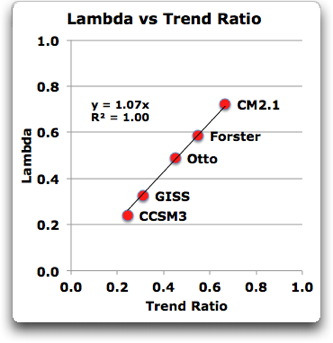
Abbildung 2: Punktwolke, die die Beziehung zwischen Lambda und dem Verhältnis des Output-Trends zum Input-Trend zeigt. Forster ist das Mittel des Forster 19-Modells. Otto sind die Forster-Input-Daten, modifiziert von Otto einschließlich der Hinzufügung eines Trends von 0,3 W/m² über die zeitliche Länge des Datensatzes. Weil in dieser Analyse nur Strahlungsantriebe und keine Ozeanantriebe verwendet werden, ist Lambda die vorübergehende Reaktion des Klimas (transient climate response TCR). Fügt man den Daten die Ozean-Antriebe hinzu, wäre Lambda die Gleichgewichts-Klimasensitivität. Lambda ist dargestellt in Grad pro W/m² Antrieb. Um das in Grad pro Verdoppelung des CO2-Gehaltes zu konvertieren, muss man Lambda mit 3,7 multiplizieren.
Und siehe da, diese Art Korrelation sieht man nicht sehr oft, R² = 1,00 bis auf zwei Stellen nach dem Komma … das spricht für mich.
Lassen Sie mich den Vorbehalt wiederholen, dass wir hier nicht über reale Temperaturen reden. Dies ist ein weiterer „Schwarzkörper“-Vergleich der Modell-Inputs (vermutlich eine Art reale-Welt-„Antrieb“ von der Sonne und Vulkanen und Aerosole und Ruß und alles andere) und der Modellergebnisse. Ich versuche zu verstehen, was die Modelle machen, und nicht, wie sie es machen.
Nun standen mir nicht die von den Modellen verwendeten Daten des Ozean-Antriebs zur Verfügung. Aber ich habe die Levitus-Daten des ozeanischen Wärmegehaltes seit 1950, so wenig diese auch als Ersatz taugen. Also habe ich diese jedem Antriebs-Datensatz hinzugefügt, um neue Datensätze zu erstellen, die auch die Ozeandaten enthalten. Wie man sich vorstellen kann, wenn einiges der jüngsten Antriebe in den Ozean geht, fällt der Trend im Antriebs-Datensatz ab … und wie man erwarten würde, nimmt das Trendverhältnis (und folglich die Klimasensitivität) zu. Dieser Effekt ist dort am ausgeprägtesten, wo der Antriebs-Datensatz einen kleineren Trend aufweist (CM2.1) und weniger deutlich am anderen Ende der Skala (CCSM3). Abbildung 3 zeigt die gleichen fünf Datensätze wie Abbildung 2 plus den gleichen fünf Datensätzen mit den hinzu gefügten Ozean-Antrieben. Man beachte, dass Lambda die Gleichgewichts-Klimasensitivität ist, wenn der Antriebs-Datensatz den Wärmetransport in den und aus dem Ozean enthält. Wenn der Datensatz den Strahlungsantrieb allein enthält, ist Lambda die vorübergehende Klimareaktion. Also sind die blauen Punkte in Abbildung 3 ECS und die roten Punkte TCR. Die mittlere Änderung (ECS/TCR) beträgt 1,25, was zu der Schätzung von ~ 1,3 in der Otto-Studie passt.
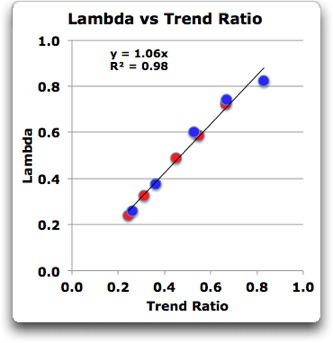
Abbildung 3: Die roten Punkte zeigen die Modelle wie in Abbildung 2. Blaue Punkte zeigen die gleichen Punkte, jedoch verstärkt mit den Levitus-Daten des ozeanischen Wärmegehaltes in jedem Antriebs-Datensatz. Die sich ergebenden Sensitivitäten sind höher für die Gleichgewichts-Bedingung als für die kurzlebige Bedingung, was zu erwarten war. Blaue Punkte zeigen die Gleichgewichts-Klimasensitivität ECS, während die roten Punkte (wie in Abbildung 2) die korrespondierende kurzlebige Klima-Reaktion TCR zeigen.
Schließlich habe ich die fünf unterschiedlichen Antriebs-Datensätze durchlaufen lassen, mit und ohne Ozean-Antrieb, und mit drei aktuellen Temperatur-Datensätzen verglichen – HadCRUT4, BEST und GISS LOTI. Ich habe Daten aus allen diesen genommen, und die Ergebnisse der Analyse dieser 29 Modellläufe sehen so aus:
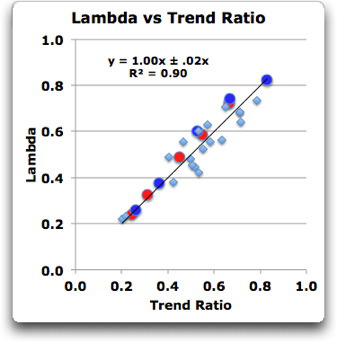
Abbildung 4: Große rote und blaue Punkte wie in Abbildung 3. Die hellblauen Punkte sind das Ergebnis der Berechnung der Antriebe und die Teilmengen der Antriebe, mit und ohne Ozean-Antrieb sowie mit und ohne Vulkan-Antrieb, im Vergleich mit aktuellen Datensätzen. Der gezeigte Fehler beträgt 1 Sigma.
Also lautet mein neues Ergebnis: Die Klimasensitivität der Modelle, sowohl individuell als auch im Mittel, ist gleich dem Verhältnis der Trends des Antriebs und der resultierenden Temperaturen. Dabei spielt es keine Rolle, ob Änderungen des ozeanischen Wärmegehaltes in die Berechnung mit einbezogen werden. Es gilt sowohl für den Vergleich Antriebe <-> Modell-Temperaturergebnisse als auch für Antriebe <-> aktuelle Temperatur-Datensätze. Es gilt auch für Teilmengen des Antriebs wie z. B. Vulkane allein, oder auch für Treibhausgase.
Und diese Beziehung habe ich nicht nur experimentell gefunden durch Betrachten der Ergebnisse der einzeiligen Gleichung für Modelle und Modellergebnisse. Dann fand ich heraus, dass man diese Beziehung mathematisch aus der One-Line-Gleichung ableiten kann (siehe Anhang D mit Details).
Das ist eine klare Bestätigung einer Beobachtung, die zum ersten Mal im Jahr 2007 von Kiehl gemacht worden ist, als er eine umgekehrte Beziehung zwischen Antrieb und Sensitivität vermutete.
Die Frage lautet: Wenn sich die Klimamodelle um einen Faktor 2 bis 3 hinsichtlich der Klimasensitivität unterscheiden, wie können sie allesamt den globalen Temperaturverlauf mit hinreichender Genauigkeit simulieren? Kerr (2007) und S. E. Schwartz et al. (Quantifizierung der Klimaänderung – ein zu rosiges Bild? hier) wiesen kürzlich darauf hin, wie wichtig es ist, die Antwort auf diese Frage zu verstehen. Tatsächlich hat sich Kerr (2007) auf die gegenwärtige Arbeit bezogen, und die jetzige Studie zeigt die „weithin zirkulierende Analyse“, auf die sich Kerr (2007) bezieht. Dieser Bericht untersucht die wahrscheinlichste Erklärung für ein solches Übereinkommen. Sie verwendet veröffentlichte Ergebnisse von einer Vielzahl von Modellsimulationen, um dieses offensichtliche Paradoxon zwischen Klimareaktionen des 20. Jahrhunderts im Modell und verschiedenen Klimamodell-Sensitivitäten zu verstehen.
Allerdings hat Kiehl die Variationen der Sensitivität einem Unterschied im Gesamtantrieb zugeschrieben und nicht einer Trendbeziehung, und als Ergebnis ist seine Graphik der Ergebnisse viel mehr verstreut.
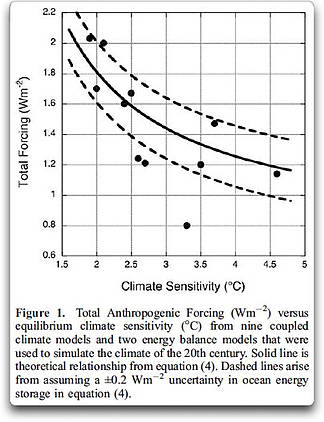
Abbildung 5: Kiehl-Ergebnisse, Vergleich der Klimasensitivität ECS mit dem Gesamtantrieb. Man beachte, dass meine Ergebnisse anders als bei Kiehl sowohl die Gleichgewichts-Klimasensitivität (ECS) als auch die kurzlebige Klimareaktion (TCR) abdecken.
Wie auch immer, es gibt noch viel mehr, das ich zu diesem Ergebnis schreiben könnte, aber ich muss mir das jetzt einfach aus dem Kopf schlagen und zur Tagesordnung übergehen. Einen abschließenden Kommentar habe ich noch:
Seit ich mit dieser Untersuchung begonnen habe, hat Kommentator Paul K zwei herausragende Beiträge hierzu auf dem ausgezeichneten Blog von Lucia, The Blackboard (Part 1, Part 2) geschrieben. In diesen Beiträgen beweist er mathematisch, dass mit dem, was wir über die die Modelle reproduzierende Gleichung wissen, nicht… aber lassen wir ihn selbst zu Wort kommen:
Die Frage: Kann man oder kann man nicht die Gleichgewichts-Klimasensitivität (ECS) aus 120 Jahren Temperaturaufzeichnung und OHC-Daten abschätzen, (selbst) wenn man die Antriebe kennt?
Die Antwort lautet: Nein! Man kann nicht! Nicht, solange man nicht andere Informationen verwendet, um die Schätzung zu belegen.
Eine wichtige Folgerung daraus lautet: Die Tatsache, dass ein Klimamodell Temperatur- und Wärmedaten zueinander passend machen kann, sagt uns nichts über die Gültigkeit der Schätzung der Gleichgewichts-Klimasensitivität dieses Klimamodells.
Man beachte, dass dies nicht eine Einzelmeinung von Paul K ist. Es ist ein mathematisches Ergebnis der Tatsache, dass selbst wenn wir ein komplexeres „Zwei Kisten“-Modell benutzen, wir die Sensitivitäts-Schätzungen nicht belegen können. Dies ist eine erstaunliche und weitgehend unbeachtete Schlussfolgerung. Das essentielle Problem besteht darin, dass wir für irgendein gegebenes Klimamodell mehr Unbekannte haben als grundlegende Gleichungen, diese zu belegen.
Schlussfolgerungen
Nun, aus meinen früheren Arbeiten war hervorgegangen, dass die Modelle sowohl für die „Nachher“- als auch für die Vorhersage des Klimas nutzlos sind. Ihre Funktion ist von einer einfachen One-Line-Gleichung ununterscheidbar.
Und nun hat uns Paul K gesagt, dass sie uns nichts über die Sensitivität sagen können, weil die Gleichung selbst nur unzureichend belegt ist.
Schließlich habe ich in dieser Arbeit gezeigt, dass die Klimasensitivität „Lambda“, die die Modelle zur Schau stellen, nichts weiter ist als das Verhältnis der Trends zwischen Input und Output, egal ob sie die Gleichgewichts-Klimasensitivität (ECS) oder kurzlebige Klima-Reaktionen (TCR) repräsentieren. Die Auswahl der Antriebe, Modelle und Datensätze ist ziemlich unerheblich. Alle Modelle zeigen das gleiche Ergebnis für Lambda, und dieses Ergebnis ist das Verhältnis zwischen den Trends des Antriebs und der Reaktion darauf. Dieses jüngste Ergebnis erklärt vollständig die Unfähigkeit der Modellierer, die Bandbreite möglicher Klimasensitivitäten zu verkleinern, trotz dreißig Jahre Modellierungsarbeit.
Ich bin sicher, Sie können daraus eigene Schlussfolgerungen ziehen …
Willis Eschenbach
———————————————————————————-
Hinweis des Übersetzers: Eschenbach fügt hier einige Anhänge bei, die sehr mathematisch sind. Zum Nachrechnen sind diese auch dieser Übersetzung beigefügt, aber nicht übersetzt. Denn erstens würde das den fachlichen Hintergrund des Übersetzers sprengen, und zweitens geht der Übersetzer davon aus, dass Personen, die diese Rechnungen nachvollziehen können, auch des Englischen so mächtig sind, dass sie keine Übersetzung brauchen.
———————————————————————————
Appendix A : The One-Line Equation
The equation that Paul_K, Isaac Held, and I have used to replicate the climate models is as follows:
![]()
Let me break this into four chunks, separated by the equals sign and the plus signs, and translate each chunk from math into English. Equation 1 means:
This year’s temperature (T1) is equal to
Last years temperature (T0) plus
Climate sensitivity (λ) times this year’s forcing change (∆F1) times (one minus the lag factor) (1-a) plus
Last year’s temperature change (∆T0) times the same lag factor (a)
Or to put it another way, it looks like this:
T1 = <— This year’s temperature [ T1 ] equals
T0 + <— Last year’s temperature [ T0 ] plus
λ ∆F1 (1-a) + <— How much radiative forcing is applied this year [ ∆F1 (1-a) ], times climate sensitivity lambda ( λ ), plus
∆T0 a <— The remainder of the forcing, lagged out over time as specified by the lag factor “a“
The lag factor “a” is a function of the time constant “tau” ( τ ), and is given by
![]()
This factor “a” is just a constant number for a given calculation. For example, when the time constant “tau” is four years, the constant “a” is 0.78. Since 1 – a = 0.22, when tau is four years, about 22% of the incoming forcing is added immediately to last years temperature, and rest of the input pulse is expressed over time.
Appendix B: Physical Meaning
So what does all of that mean in the real world? The equation merely reflects that when you apply heat to something big, it takes a while for it to come up to temperature. For example, suppose we have a big brick in a domestic oven at say 200°C. Suppose further that we turn the oven heat up suddenly to 400° C for an hour, and then turn the oven back down to 200°C. What happens to the temperature of the big block of steel?
If we plot temperature against time, we see that initially the block of steel starts to heat fairly rapidly. However as time goes on it heats less and less per unit of time until eventually it reaches 400°C. Figure B2 shows this change of temperature with time, as simulated in my spreadsheet for a climate forcing of plus/minus one watt/square metre. Now, how big is the lag? Well, in part that depends on how big the brick is. The larger the brick, the longer the time lag will be. In the real planet, of course, the ocean plays the part of the brick, soaking up
The basic idea of the one-line equation is the same tired claim of the modelers. This is the claim that the changing temperature of the surface of the planet is linearly dependent on the size of the change in the forcing. I happen to think that this is only generally the rule, and that the temperature is actually set by the exceptions to the rule. The exceptions to this rule are the emergent phenomena of the climate—thunderstorms, El Niño/La Niña effects and the like. But I digress, let’s follow their claim for the sake of argument and see what their models have to say. It turns out that the results of the climate models can be described to 99% accuracy by the setting of two parameters—”tau”, or the time constant, and “lambda”, or the climate sensitivity. Lambda can represent either transient sensitivity, called TCR for “transient climate response”, or equilibrium sensitivity, called ECS for “equilibrium climate sensitivity”.
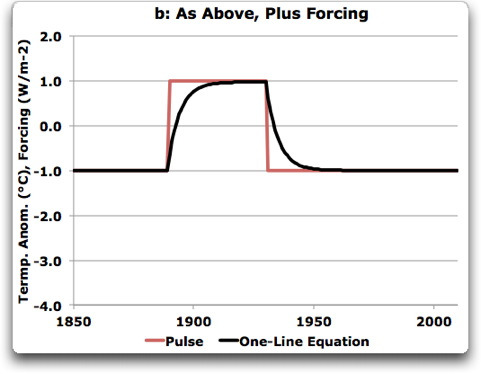
Figure B2. One-line equation applied to a square-wave pulse of forcing. In this example, the sensitivity “lambda” is set to unity (output amplitude equals the input amplitude), and the time constant “tau” is set at five years.
Note that the lagging does not change the amount of energy in the forcing pulse. It merely lags it, so that it doesn’t appear until a later date.
So that is all the one-line equation is doing. It simply applies the given forcing, using the climate sensitivity to determine the amount of the temperature change, and using the time constant “tau” to determine the lag of the temperature change. That’s it. That’s all.
The difference between ECS (climate sensitivity) and TCR (transient response) is whether slow heating and cooling of the ocean is taken into account in the calculations. If the slow heating and cooling of the ocean is taken into account, then lambda is equilibrium climate sensitivity. If the ocean doesn’t enter into the calculations, if the forcing is only the radiative forcing, then lambda is transient climate response.
Appendix C. The Spreadsheet
In order to be able to easily compare the various forcings and responses, I made myself up an Excel spreadsheet. It has a couple drop-down lists that let me select from various forcing datasets and various response datasets. Then I use the built-in Excel function “Solver” to iteratively calculate the best combination of the two parameters, sensitivity and time constant, so that the result matches the response. This makes it quite simple to experiment with various combinations of forcing and responses. You can see the difference, for example, between the GISS E model with and without volcanoes. It also has a button which automatically stores the current set of results in a dataset which is slowly expanding as I do more experiments.
In a previous post called Retroactive Volcanoes, (link) I had discussed the fact that Otto et al. had smoothed the Forster forcings dataset using a centered three point average. In addition they had added a trend fromthe beginning tothe end of the dataset of 0.3 W per square meter. In that post I had I had said that the effect of that was unknown, although it might be large. My new spreadsheet allows me to actually determine what the effect of that actually is.
It turns out that the effect of those two small changes is to take the indicated climate sensitivity from 2.8 degrees/doubling to 2.3° per doubling.
One of the strangest findings to come out of this spreadsheet was that when the climate models are compared each to their own results, the climate sensitivity is a simple linear function of the ratio of the trends of the forcing and the response. This was true of both the individual models, and the average of the 19 models studied by Forster. The relationship is extremely simple. The climate sensitivity lambda is 1.07 times the ratio of the trends for the models alone, and equal to the trends when compared to all the results. This is true for all of the models without adding in the ocean heat content data, and also all of the models including the ocean heat content data.
In any case I’m going to have to convert all this to the computer language R. Thanks to Stephen McIntyre, I learned the computer language R and have never regretted it. However, I still do much of my initial exploratory forays in Excel. I can make Excel do just about anything, so for quick and dirty analyses like the results above I use Excel.
So as an invitation to people to continue and expand this analysis, my spreadsheet is available here. Note that it contains a macro to record the data from a given analysis. At present it contains the following data sets:
IMPULSES
Pinatubo in 1900
Step Change
Pulse
FORCINGS
Forster No Volcano
Forster N/V-Ocean
Otto Forcing
Otto-Ocean ∆
Levitus watts Ocean Heat Content ∆
GISS Forcing
GISS-Ocean ∆
Forster Forcing
Forster-Ocean ∆
DVIS
CM2.1 Forcing
CM2.1-Ocean ∆
GISS No Volcano
GISS GHGs
GISS Ozone
GISS Strat_H20
GISS Solar
GISS Landuse
GISS Snow Albedo
GISS Volcano
GISS Black Carb
GISS Refl Aer
GISS Aer Indir Eff
RESPONSES
CCSM3 Model Temp
CM2.1 Model Temp
GISSE ModelE Temp
BEST Temp
Forster Model Temps
Forster Model Temps No Volc
Flat
GISS Temp
HadCRUT4
You can insert your own data as well or makeup combinations of any of the forcings. I’ve included a variety of forcings and responses. This one-line equation model has forcing datasets, subsets of those such as volcanoes only or aerosols only, and the simple impulses such as a square step.
Now, while this spreadsheet is by no means user-friendly, I’ve tried to make it at least not user-aggressive.
Appendix D: The Mathematical Derivation of the Relationship between Climate Sensitivity and the Trend Ratio.
I have stated that the relationship where climate sensitivity is equal to the ratio between trends of the forcing and response datasets.
We start with the one-line equation:
![]()
Let us consider the situation of a linear trend in the forcing, where the forcing is ramped up by a certain amount every year. Here are lagged results from that kind of forcing.
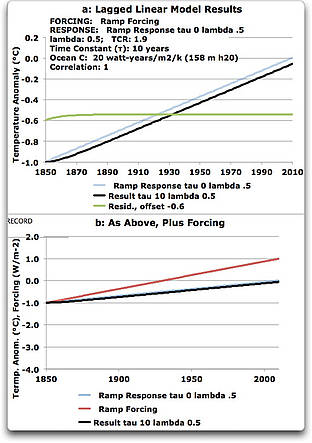
Figure B1. A steady increase in forcing over time (red line), along with the situation with the time constant (tau) equal to zero, and also a time constant of 20 years. The residual is offset -0.6 degrees for clarity.
Note that the only difference that tau (the lag time constant) makes is how long it takes to come to equilibrium. After that the results stabilize, with the same change each year in both the forcing and the temperature (∆F and ∆T). So let’s consider that equilibrium situation.
Subtracting T0 from both sides gives
![]()
Now, T1 minus T0 is simply ∆T1. But since at equilibrium all the annual temperature changes are the same, ∆T1 = ∆T0 = ∆T, and the same is true for the forcing. So equation 2 simplifies to
![]()
Dividing by ∆F gives us

Collecting terms, we get

And dividing through by (1-a) yields

Now, out in the equilibrium area on the right side of Figure B1, ∆T/∆F is the actual trend ratio. So we have shown that at equilibrium

But if we include the entire dataset, you’ll see from Figure B1 that the measured trend will be slightly less than the trend at equilibrium.
And as a result, we would expect to find that lambda is slightly larger than the actual trend ratio. And indeed, this is what we found for the models when compared to their own results, lambda = 1.07 times the trend ratio.
When the forcings are run against real datasets, however, it appears that the greater variability of the actual temperature datasets averages out the small effect of tau on the results, and on average we end up with the situation shown in Figure 4 above, where lambda is experimentally determined to be equal to the trend ratio.
Appendix E: The Underlying Math
The best explanation of the derivation of the math used in the spreadsheet is an appendix to Paul_K’s post here. Paul has contributed hugely to my analysis by correcting my mistakes as I revealed them, and has my great thanks.
Climate Modeling – Abstracting the Input Signal by Paul_K
I will start with the (linear) feedback equation applied to a single capacity system—essentially the mixed layer plus fast-connected capacity:
C dT/dt = F(t) – λ *T Equ. A1
Where:-
C is the heat capacity of the mixed layer plus fast-connected capacity (Watt-years.m-2.degK-1)
T is the change in temperature from time zero (degrees K)
T(k) is the change in temperature from time zero to the end of the kth year
t is time (years)
F(t) is the cumulative radiative and non-radiative flux “forcing” applied to the single capacity system (Watts.m-2)
λ is the first order feedback parameter (Watts.m-2.deg K-1)
We can solve Equ A1 using superposition. I am going to use timesteps of one year.
Let the forcing increment applicable to the jth year be defined as fj. We can therefore write
F(t=k ) = Fk = Σ fj for j = 1 to k Equ. A2
The temperature contribution from the forcing increment fj at the end of the kth
year is given by
ΔTj(t=k) = fj(1 – exp(-(k+1-j)/τ))/λ Equ.A3
where τ is set equal to C/λ .
By superposition, the total temperature change at time t=k is given by the summation of all such forcing increments. Thus
T(t=k) = Σ fj * (1 – exp(-(k+1-j)/τ))/ λ for j = 1 to k Equ.A4
Similarly, the total temperature change at time t= k-1 is given by
T(t=k-1) = Σ fj (1 – exp(-(k-j)/τ))/ λ for j = 1 to k-1 Equ.A5
Subtracting Equ. A4 from Equ. A5 we obtain:
T(k) – T(k-1) = fk*[1-exp(-1/τ)]/λ + ( [1 – exp(-1/τ)]/λ ) (Σfj*exp(-(k-j)/τ) for j = 1 to k-1) …Equ.A6
We note from Equ.A5 that
(Σfj*exp(-(k-j)/τ)/λ for j = 1 to k-1) = ( Σ(fj/λ ) for j = 1 to k-1) – T(k-1)
Making this substitution, Equ.A6 then becomes:
T(k) – T(k-1) = fk*[1-exp(-1/τ)]/λ + [1 – exp(-1/τ)]*[( Σ(fj/λ ) for j = 1 to k-1) – T(k-1)] …Equ.A7
If we now set α = 1-exp(-1/τ) and make use of Equ.A2, we can rewrite Equ A7 in the following simple form:
T(k) – T(k-1) = Fkα /λ – α * T(k-1) Equ.A8
Equ.A8 can be used for prediction of temperature from a known cumulative forcing series, or can be readily used to determine the cumulative forcing series from a known temperature dataset. From the cumulative forcing series, it is a trivial step to abstract the annual incremental forcing data by difference.
For the values of α and λ, I am going to use values which are conditioned to the same response sensitivity of temperature to flux changes as the GISS-ER Global Circulation Model (GCM).
These values are:-
α = 0.279563
λ = 2.94775
Shown below is a plot confirming that Equ. A8 with these values of alpha and lamda can reproduce the GISS-ER model results with good accuracy. The correlation is >0.99.
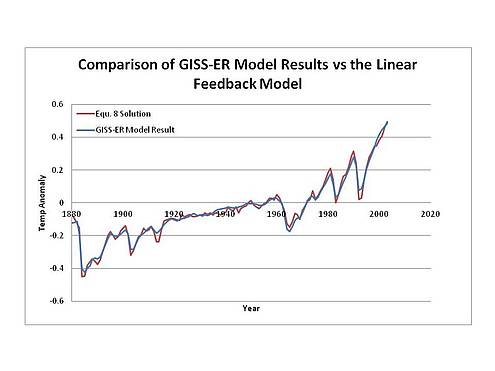
This same governing equation has been applied to at least two other GCMs ( CCSM3 and GFDL ) and, with similar parameter values, works equally well to emulate those model results. While changing the parameter values modifies slightly the values of the fluxes calculated from temperature , it does not significantly change the structural form of the input signal, and nor can it change the primary conclusion of this article, which is that the AGW signal cannot be reliably extracted from the temperature series.
Equally, substituting a more generalised non-linear form for Equ A1 does not change the results at all, provided that the parameters chosen for the non-linear form are selected to show the same sensitivity over the actual observed temperature range. (See here for proof.)
Link: http://wattsupwiththat.com/2013/06/03/climate-sensitivity-deconstructed/

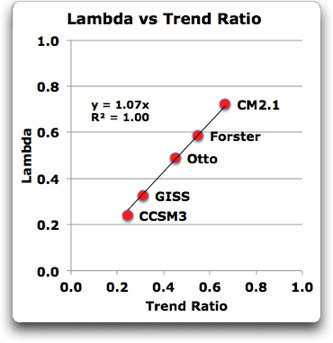


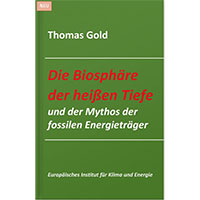
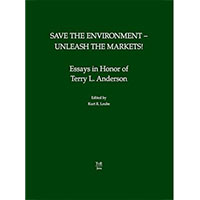
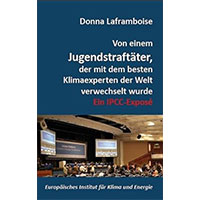
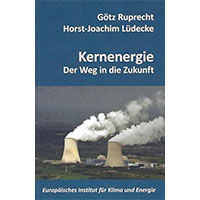
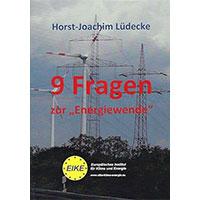

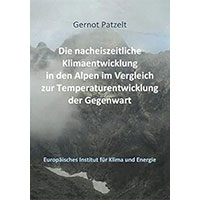
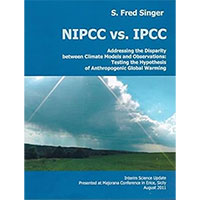
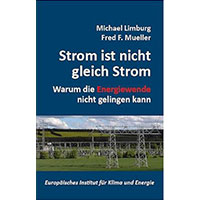
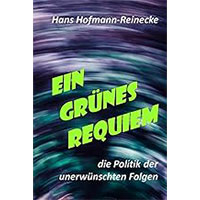


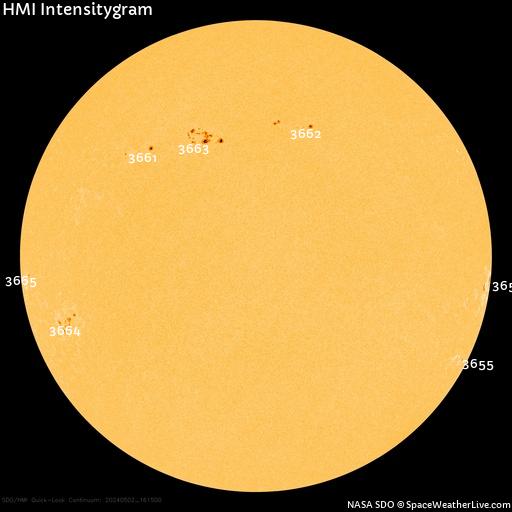
Wir freuen uns über Ihren Kommentar, bitten aber folgende Regeln zu beachten:
- Bitte geben Sie Ihren Namen an (Benutzerprofil) - Kommentare "von anonym" werden gelöscht.
- Vermeiden Sie Allgemeinplätze, Beleidigungen oder Fäkal- Sprache, es sei denn, dass sie in einem notwendigen Zitat enthalten oder für die Anmerkung wichtig sind. Vermeiden Sie Schmähreden, andauernde Wiederholungen und jede Form von Mißachtung von Gegnern. Auch lange Präsentationen von Amateur-Theorien bitten wir zu vermeiden.
- Bleiben Sie beim Thema des zu kommentierenden Beitrags. Gehen Sie in Diskussionen mit Bloggern anderer Meinung auf deren Argumente ein und weichen Sie nicht durch Eröffnen laufend neuer Themen aus. Beschränken Sie sich auf eine zumutbare Anzahl von Kommentaren pro Zeit. Versuchte Majorisierung unseres Kommentarblogs, wie z.B. durch extrem häufiges Posten, permanente Wiederholungen etc. (Forentrolle) wird von uns mit Sperren beantwortet.
- Sie können anderer Meinung sein, aber vermeiden Sie persönliche Angriffe.
- Drohungen werden ernst genommen und ggf. an die Strafverfolgungsbehörden weitergegeben.
- Spam und Werbung sind im Kommentarbereich nicht erlaubt.
Diese Richtlinien sind sehr allgemein und können nicht jede mögliche Situation abdecken. Nehmen Sie deshalb bitte nicht an, dass das EIKE Management mit Ihnen übereinstimmt oder sonst Ihre Anmerkungen gutheißt. Wir behalten uns jederzeit das Recht vor, Anmerkungen zu filtern oder zu löschen oder zu bestreiten und dies ganz allein nach unserem Gutdünken. Wenn Sie finden, dass Ihre Anmerkung unpassend gefiltert wurde, schicken Sie uns bitte eine Mail über "Über Uns->Kontakt"Paul # 40
Spam wird in vielen Foren gelöscht, dass sollten sie mittlerweile am besten wissen.
Wenn Leuten wie ihnen nichts besseres einfällt, als Klimaforen mit immer wieder den selben Phrasen voll zu müllen, dann darf man sich nicht wundern, wenn man von den Admins nicht immer berücksichtigt wird.
Übrigens, beleidigend sind hauptsächlich sie selbst. Glauben sie im ernst, wir würden ihr lieblings Wood Experiment nicht verstehen und maßen sie sich einfach nicht an, dass wir Meteorologen und Klimatologen alle so blöd wären, folgend den THE als „Verschwöhrung“ od. als nicht existent zu erklären. Das machen nur Leute, die wenig bis gar nichts verstehen. Sie zum Beispiel.
sehr geehrter Herr Prof. Kramm,
da sie auf meine ernst gemeinte Frage nicht eingegangen sind, unterstelle ich, daß Sie die Ergebnisse Ihrer Arbeit:Because of this lack of tangible evidence it is time to acknowledge that the atmospheric green-house effect and especially its climatic impact are based on meritless conjecture“ aus Ihrer Veröffentlichung Scrutinizing the atmospheric greenhouse effect and its climatic impact in Natural Science Vol. 3 No 12 2011 immer noch als gültig ansehen. Ich frage mich allerdings, wieso Sie den den Treibhausvertreter Ebel, der seine ganze Physik dem „Treibhauseffekt“ anpaßt und das genaue Gegenteil Ihrer Aussage vertritt hier so energisch verteidigen. Eine weitere Frage meinerseits: Sie haben hier geschrieben, daß Sie die Gegenstrahlung auf der Meteor gemessen haben. Würden Sie daher den von Herrn Keks vorgeschlagenen Bau eines Gegenstrahlungskraftwerks für sinnvoll halten? Immerhin gibt es diese Strahlung ja rund um die Uhr und man hätte ein Grundlastkraftwerk.
mfG
H. Urbahn
Wenn es um die Rettung des Treibhauseffektes geht,
dürfen Ebel und Co weiter polemisieren und beleidigen.
Der Admin hat wieder einen Beitrag von mir kommentarlos gelöscht!
mfG
#36: Dr.Paul sagt am Freitag, 21.06.2013, 21:02
„#33:Herr Ebel Ihre klettenhafte Verfolgung meiner sachlichen Beiträge …“
Gleich zwei Mal ein Witz:
1.) Märchen als „sachliche Beiträge“ zu bezeichnen ist ein Witz
2.) Ihr Wunsch wäre es natürlich, daß Ihre Märchen unwidersprochen bleiben.
#36: Dr.Paul sagt am Freitag, 21.06.2013, 21:02
„ich weis nicht warum der Admin da immer seelenruhig zusieht, da werden lieber mal MEINE Antworten gelöscht,“
Wenn ich mich nicht irre, hat Paul sogar irgendwo meine Sperrung hatte Paul irgendwo verlangt, aber auf jeden Fall soll ich hier aus dem Forum verschwinden „Ebel … sollte sich ein anderes Forum suchen.“
Paul will also, daß seine Märchen unkommentiert bleiben – aber die Admins sind eben klüger als Paul. Die Toleranz der Admins geht sogar so weit, daß sie Pauls Märchen veröffentlichen.
#36: Dr.Paul sagt am Freitag, 21.06.2013, 21:02
„Er weis offensichtlich nicht, was die Skalenhöhe ist. In der potentiellen Energie = m*g*z,“
Ich weiß es schon und verstehe es – aber Sie nicht. Siehe z.B. http://tinyurl.com/LevinSH S. 6, Fig. 1.2 und Text.
#36: Dr.Paul sagt am Freitag, 21.06.2013, 21:02
„Nur wirken UNTERHALB dieser „Aufteilung“ turbulente Kräfte STÄRKER, die damit ein LTE ausschließen“
Sie überlesen einfach alles – und wissen deshalb nichts. Auch wenn unterschiedliche Gaskomonenten sind, hat lokal jeder Gasanteil die gleiche Temperatur. Mit dem LTE hat das erst mal gar nichts zu tun.
#37: Dr.Paul sagt am Freitag, 21.06.2013, 22:00
„Da hat also ein gewisses „Wärmebad Gas“ intensiven Kontakt mit dem Wärmebad von WAS???“
Wärmebad ist ein physikalischer Begriff für einen bestimmten Sachverhalt, wo Sie natürlich wieder keine Ahnung haben. Vielleicht hilft Ihnen: http://tinyurl.com/WaerBad
Bei „von WAS???“ sollten Sie lesen @ #26: Ebel sagt am Dienstag, 18.06.2013, 19:34 – aber da habe ich schon vermutet, daß das für Sie zu hoch ist
„Aber Sie wissen offensichtlich nicht, was das LTE ist – ich erkläre es Ihnen noch mal zu erklären bringt Nichts – aber vielleicht bringt die Erklärung für andere Leser etwas. …“
#37: Dr.Paul sagt am Freitag, 21.06.2013, 22:00
„Grundkenntnisse der Thermodynamik.“
Die fehlen Ihnen eben, wie Sie gerade im Text davor bewiesen haben.
#37: Dr.Paul sagt am Freitag, 21.06.2013, 22:00
„Auch die Bolzman-Statistik ist eine IDEALISIERUNG, die sich nur bei einem „idealen Gas“ ausbilden kann.“
Sie haben eben keine Ahnung. Natürlich ist „die Bolzman-Statistik … eine IDEALISIERUNG“ – aber eine sinnvolle. Die Boltzmann-Statistik ist eine stetige Größe, Da aber die Zahl der Moleküle nur ganzzahlig ist, sind nur Brüche zwischen Ganzzahlen möglich und keine Stetigkeit. Bei der großen Zahl der Moleküle sind aber die Abweichungen zwischen Stetigkeit und Ganzzahlenbrüche so gering, daß es praktisch keine Rolle spielt. Darüber hinaus gibt es durch Zufälle weitere geringe Abweichungen, die aber praktisch keine Rolle spielen – es gäbe sonst keine Gaslaser.
#37: Dr.Paul sagt am Freitag, 21.06.2013, 22:00
„Noch so eine dolle #33: Ebel-Innovation:“
Da Sie eben von Physik kaum Ahnung haben, ist schon die Nennung von physikalischen Grundlagenwissen für Sie eine „Innovation“.
#38: Dr.Paul sagt am Samstag, 22.06.2013, 08:21
„Admin wie begründen sie bitte das Streichen des Wortes „Unverschämtheiten“,“
Jetzt gehen Sie nicht nur gegen andere Fachleute vor, weil die Ihre Märchen widerlegen, sondern sogar gegen die Admins.
#38: Dr.Paul sagt am Samstag, 22.06.2013, 08:21
„natürlich, wie immer OHNE den Nachweis einer einzigen Fälschung,“
Das ist Ihnen schon oft nachgewiesen worden. Bleibt höchstens die Frage: „Sind Ihre Kenntnisse so gering, daß Sie noch nicht einmal verstehen, wenn Ihnen eine Fälschung nachgewiesen wird?“
MfG
Admin wie begründen sie bitte das Streichen des Wortes „Unverschämtheiten“,
wenn Sie so etwas
kommentarlos durchgehen lassen:
Ebel:
„Ansonsten ist es eine Frechheit, wie Sie Leute beleidigen wollen, bloß weil Ihr Wissen nicht ausreicht, die Ausführungen von Fachleuten zu verstehen.“
Oder die unflätigen und natürlich wie immer sachlich völlig unbegrüdeten Beleidigungen von Innerhofer und Burowski, gelegentlich auch ein gewisser M.Müller
Was bezwecken Sie mit dieser Einseitigkeit?
Wollen Sie AGW-Trolle hier ermuntern?
Sie haben schon einmal eine Anfrage von mir einfach OHNE BEGRÜNDUNG!!!gelöscht,
dabei ging es um das üble Schimpfwort von Ebel „notorischer Fälscher“,
natürlich, wie immer OHNE den Nachweis einer einzigen Fälschung,
so etwas habe ich nicht nötig!
Dieses Schimpfwort ist immer noch nicht von Ihnen gelöscht worden!!!
Dr.Paul
Noch so eine dolle #33: Ebel-Innovation:
„Wegen der Häufigkeit der Kollisionen im unteren Atmosphärenbereich, reden viele Skeptiker von der Thermalisierung der absorbierten Strahlung. Dieser intensive Kontakt zwischen dem Wärmebad Gas und dem Wärmebad Boltzmann-Verteilung des Anregungszustandes der Moleküle führt praktisch zu einer Gleichheit beider Temperaturen (LTE).“
Da hat also ein gewisses „Wärmebad Gas“
intensiven Kontakt mit dem Wärmebad von
WAS???
merke:
Auch die Bolzman-Statistik ist eine IDEALISIERUNG, die sich nur bei einem „idealen Gas“ ausbilden kann.
Das ist die Erdatmosphäre nicht, wie von mir gerade gezeigt (Skalenhöhe)
und das wäre selbst bei einem idealen Gas dann nicht der Fall,
wenn es EINSEITIG erhitzt wird wie die strahlungstransparente Atmosphäre von der Erdoberfläche.
Grundkenntnisse der Thermodynamik.
Gruß
#33:Herr Ebel Ihre klettenhafte Verfolgung meiner sachlichen Beiträge zeichnet sich nur noch durch XXXXXXXXX aus,
ich weis nicht warum der Admin da immer seelenruhig zusieht, da werden lieber mal MEINE Antworten gelöscht,
offenbar um den Treibhauseffekt zu retten!
Ich habe bisher noch KEINE EINZIGE stichhaltige Widerlegung gegen meine sachlichen Ausführungen durch Ebel gelesen.
Er weis offensichtlich nicht, was die Skalenhöhe ist.
In der potentiellen Energie = m*g*z,
steckt m, die Masse, das müsste auch ein Mittelschüler kappieren.
Deshalb beginnt irgendwann in der Atmosphäre die Aufteilung der Moleküle nach ihrer Masse, Heterosphäre genannt, wird meist oberhalb von 100km angegeben.
Wasserstoff ist also das entfernteste Atom der Erdatmosphäre entsprechend seiner kleinsten potentiellen Energie im Schwerefeld.
Nur wirken UNTERHALB dieser „Aufteilung“ turbulente Kräfte STÄRKER, die damit ein LTE ausschließen, da die „mikroskopischen“ molekularen Kräfte gegenüber der stärkeren Turbulenz als Sammelbegriff makroskopischer Kräfte zurücktreten.
Ihr lächerliches Schwarzschild- Argument („Sonnen-Atmosphäre“) Herr Ebel, das in Original auf meinem Rechner ist,
hab ich ihnen schon mindestens 5 mal widerlegt.
Die Sonne ist nun mal NICHT die Erde.
Es ist schon peinlich dass Sie immer wieder damit ankommen. Das gleiche gilt für Milne („Sonnenphysik“.
Ich verzichte hier auf Wiederholungen, die NICHT zum Thema gehören.
Noch einmal,
sachlich inhaltlich haben Sie hier schon lange ausgespielt,
deshalb meinen Sie, das mit Polemik ausgleichen zu müssen.
Trollen Sie sich endlich.
Hier holen Sie sich nur eine blutige Nase.
Mit freundlichem Gruß
@ #34: Dr.Paul sagt am Freitag, 21.06.2013, 19:42
„Und danke für die Bestätigung das das LTE nur ein theoretisches Modell darstellt.“
Fast alle Zusammenhänge der Physik beruhen auf theoretischen Überlegerungen – aber die theoretischen Überlegerungen haben praktische Ergebnisse. Siehe z.B. Laser. Ohne die theoretischen Vorstellungen zur Besetzungsverteilung ist kein Laser vorstellbar.
Und genau analog diese Besetzungsverteilung liegt auch dem LTE zu Grunde.
MfG
#30: Gerhard Kramm und #29: Gunnar Innerhofer,
Das war ja wirklich eine hervorragende Antwort auf meine Frage:
„Schon mit diesem Verweis (Feldmann 2006) bleibt für Sie noch der quantitative Nachweis zu führen, dass der Feldmansche Kühleffekt, den von Ihnen (nur) angenommenen Gegenstrahlungseffekt ÜBERWIEGT.
Ihre Antwort darauf OHNE abwertende Polemik würde mich fachlich interessieren.“
Sie können also nicht.
Und danke für die Bestätigung das das LTE nur ein theoretisches Modell darstellt.
Herr Gunnar I. aus Österreich sieht auch keinerlei Möglichkeit eines Gegenarguments und möchte deshalb lieber Redeverbot für mich,
oder vielleicht die Todesstrafe?
Ihr Diskussionsstil spricht sehr überzeugend gegen einen CO2-Treibhauseffekt.
mfG
#28: Dr.Paul sagt am Freitag, 21.06.2013, 00:38
„eine potentielle Energie E=m*g*z mit einer Boltzmann-Verteilung im Energieintervall“
In einer bestimmten Höhe haben alle Moleküle die gleiche potentielle Energie – aber bei der Boltzmann-Verteilung geht es nicht um die potentielle, sondern um die kinetische Energie entsprechend der lokalen Temperatur.
#28: Dr.Paul sagt am Freitag, 21.06.2013, 00:38
„Ein Wunschtraum der Treibhauskünstler, dem Sie leider in Ihren Ausführungen weit entgegenkommen.“
Wegen der Häufigkeit der Kollisionen im unteren Atmosphärenbereich, reden viele Skeptiker von der Thermalisierung der absorbierten Strahlung. Dieser intensive Kontakt zwischen dem Wärmebad Gas und dem Wärmebad Boltzmann-Verteilung des Anregungszustandes der Moleküle führt praktisch zu einer Gleichheit beider Temperaturen (LTE).
Ich hatte Ihnen schon ein paar mal empfohlen Schwarzschild http://tinyurl.com/ScharzS und Milne http://tinyurl.com/MilneCo zu lesen.
Wenn Sie sich Mühe geben, lernen Sie vielleicht etwas Physik.
Ansonsten ist es eine Frechheit, wie Sie Leute beleidigen wollen, bloß weil Ihr Wissen nicht ausreicht, die Ausführungen von Fachleuten zu verstehen.
MfG
Sehr geehrter Herr Prof. Kramm,
im Zusammenhang mit Ihren Äußerungen hier hätte ich die folgende Frage: Betrachten Sie Ihre Aussage: Because of this lack of tangible evidence it is time to acknowledge that the atmospheric green-house effect and especially its climatic impact are based on meritless conjecture“ aus Ihrer Veröffentlichung Scrutinizing the atmospheric greenhouse effect and its climatic impact in Natural Science Vol. 3 No 12 2011 immer noch als gültig. Als Antwort ist ein Ja oder nein völlig ausreichend.
MfG
H. Urbahn
#29: Gunnar Innerhofer
Sie schreiben:
„Ihre Erwärmungsrate der Troposphäre habe sie bis Dato nicht in Zahlen gefasst, aber immerhin wissen auch sie, dass diese unvermeidlich ist.“
Nein, Herr Innerhofer, nach der Arbeit von Feldman et al. (2006) existiert in der Troposphaere ebenfalls eine Abkuehlungsrate, die allerdings gering ist. Aber als Erwaermungsrate kann man das nicht bezeichnen.
#28: Dr.Paul
Sie schreiben:
„Und nun zu Ihren unbewiesenen theoretischen Behauptungen:
„Die Bedingung des lokalen thermodynamischen Gleichgewichts ist in der Atmosphaere bis in etwa 60 km ueber Grund gut erfuellt.“
Ein Wunschtraum der Treibhauskünstler, dem Sie leider in Ihren Ausführungen weit entgegenkommen.“
Nochmals, Sie haben einfach keine Ahnung. Der Begriff des lokalen thermodynamischen Gleichgewichts stammt aus der theoretischen Physik.
Sie schreiben:
„Der Verweis auf Feldman war als Hilfestellung für Sie gedacht Herr Kramm, warum Sie ihn nun plötzlich falsch nennen, verwundert nicht wenig, da Sie nun gar nichts mehr in der Hand haben, sich als Treibhausgegner zu bezeichnen. Schon mit diesem Verweis bleibt für Sie noch der quantitative Nachweis zu führen, dass der Feldmansche Kühleffekt, den von Ihnen (nur) angenommenen Gegenstrahlungseffekt ÜBERWIEGT.
Ihre Antwort darauf OHNE abwertende Polemik würde mich fachlich interessieren.“
Offenbar haben Sie die Arbeit von Feldman et al. (2006) nicht gelesen, sonst wuerden Sie nicht ein solch unsinniges Zeug zusammenstammeln.
„Offenbar haben Sie (Paul Anm.) einfach keine Ahnung. Die Bedingung des lokalen thermodynamischen Gleichgewichts ist in der Atmosphaere bis in etwa 60 km ueber Grund gut erfuellt. Das hat etwas mit der Maxwell-Boltzmannschen Geschwindigkeitsverteilung zu tun, und nicht mit der Graviation“
Richtig Herr Kramm, „Dr“ Paul hat keine Ahnung, wie elegant, dass sie das auch erkennen.
Kramm: „Ihre Behauptung (Paul) ist falsch. Diese Arbeit von Feldman et al. (2006) belegt, dass CO2 in der Troposphäre zu einer geringen und in der Stratosphaere sowie Mesosphaere zu einer merklichen Abkuehlungsrate beitraegt“
Paul verbreitet hier nachweislich ausschließlich falsche und zum Teil unheimlich primitive Ansichten, meist selbst erfunden bzw. völlig falsch interpretiert. Warum man diesen Teilnehmer überhaupt noch akzeptiert, ist eine Frage an die EIKE Redaktion.
Wobei, Herr Kramm, dass Schichten der Stratosphäre bei erhöhter Treibhausgaskonzetration abkühlen müssen, ist sozusagen logisch. Ihre Erwärmungsrate der Troposphäre habe sie bis Dato nicht in Zahlen gefasst, aber immerhin wissen auch sie, dass diese unvermeidlich ist.
Kramm: „Fachliteratur, Herr Dr. med.,dient dazu, gelesen zu werden. in der Physik werden Fehler durch Diskussionen bereinigt, in der Medizin werden die Fehler in der Erde verscharrt“
Klar für fast alle hier ist wohl, dass Herr Paul die Fachliteratur zum Thema niemals gelesen hat und wenn, dann scheitert er einfach wegen mangelndem Verständnis und Wissen bereits beim Abstract. Ist ja keine Schande, wenn man eben einfacher Mediziner ist, wobei ich persönlich selbst das schwer in Zweifel ziehe. Meteorlogisch, klimatologisch und physikalisch bestenfalls ein interessierter Laie, aber laufend die Klappe ganz weit offen. Ein wirklich unheimlich nötiger Diskussionsteilnehmer…:-)
#27: Nun, verehrter Gerhard Kramm, nicht nur Ebel, der sich ja stolz auf Sie beruft, wo es ihm passt – er macht allerdings immer einen Treibhauseffekt daraus! – sondern auch Sie sollten einsehen, dass Ihre Einleitung:
„Offenbar haben Sie einfach keine Ahnung“
auf den Leser einen denkbar schlechten Eindruck über Sie selbst macht. Es lässt sich einfach nicht der Eindruck übersehen, dass Sie dem hilflosen Ebel meinen unterstützen zu müssen. 🙂
Insbesondere deshalb peinlich, Herr Kramm, wenn die „Klimawissenschaft“ mit ihrem wirklich KATASTROPHALEN Ruf sich anmaßt, (negative) Urteile über andere etablierte wissenschaftliche Disziplinen zu erlauben, in denen man schon seit über 70 Jahren sehr genau weis, was statistisch signifikant bedeutet und wie man eine multivariate Analyse bei multikausalen Prozessen durchführt; ganz zu schweigen von dem ALLTÄGLICHEN Umgang von Strahlung aller Art, bei dem man sich allerdings keine Diskrepanz zwischen Theorie und Praxis erlauben darf.
In der „Klimawissenschaft“ darf man sich dagegen jeden Schwachsinn erlauben und Fehlprognosen in Serie abliefern (Palmen auf Helgoland),
das können Sie mir sicher bestätigen.
Ich nehme mir daher die Freiheit, auf diesem unseriösen Metier Physiker oder Klimaforscher selbst zu beurteilen,
gerade deshalb NICHT, weil sie auf diesem Gebiet arbeiten, sondern ausschließlich deshalb, ob und weil ihre Argumentation wissenschaftlich seriös ist oder nicht.
Will sagen, nicht Ihr werter Name, sondern Ihre Argumente zählen.
Dabei beschränke ich mich sinnvollerweise auf das politisch relevante,
das ist die behauptete Schuld des Menschen über ihre „antropogene“ CO2-Produktion an einer ebenfalls völlig nebulösen Klimakatastrophe, die an Unlogik wirklich ihresgleichen sucht, da die Klimageschichte uns schlicht das Gegenteil lehrt.
Und nun zu Ihren unbewiesenen theoretischen Behauptungen:
„Die Bedingung des lokalen thermodynamischen Gleichgewichts ist in der Atmosphaere bis in etwa 60 km ueber Grund gut erfuellt.“
Ein Wunschtraum der Treibhauskünstler, dem Sie leider in Ihren Ausführungen weit entgegenkommen.
Die kanonische Gesamtheit unterschiedlicher Moleküle mit unterschiedlichen molekularphysikalischen Eigenschaften in der Atmosphäre erlaubt formal die Zerlegbarkeit in Teilsysteme mit Molekülen gleicher physikalischer Eigenschaften.
Die Skalenhöhe H ist auf den ersten Blick nur die Höhe, bei der der Druck auf den e-ten Teil abgefallen ist.
Eine homogene Atmosphäre mit der Dichte rho(0) hätte also gerade eine Mächtigkeit entsprechend der Skalenhöhe H. Die Skalehöhe z0 der Erdatmosphäre als ganzes beträgt 8km, berechnet nach der „barbarischen“ Höhenformel, die Ebel so verabscheut.
Die Aufteilung der Gesamtmasse lässt sich berechnen, wenn man für jedes einzelne Molekül im Schwerefeld der Erde eine potentielle Energie E=m*g*z mit einer Boltzmann-Verteilung im Energieintervall E bis E + dE annimmt.
Dabei zeigt sich, dass jedes Molekül eine andere Skalenhöhe besitzt mit den größten Differenzen ausgerechnet für die beiden „Treibhausgase“ CO2 von 5.500m und H2O von 12.710m.
Dies beweist zwingend, dass für die Mischungs- und Transportvorgänge in der Atmosphäre bis etwa 80km turbulente Prozesse verantwortlich sind und dass diesen gegenüber molekular-kinetische Prozesse ganz in den Hintergrund treten.
Das LTE müssen Sie also für die Realität vergessen.
Der Verweis auf Feldman war als Hilfestellung für Sie gedacht Herr Kramm, warum Sie ihn nun plötzlich falsch nennen, verwundert nicht wenig, da Sie nun gar nichts mehr in der Hand haben, sich als Treibhausgegner zu bezeichnen. Schon mit diesem Verweis bleibt für Sie noch der quantitative Nachweis zu führen, dass der Feldmansche Kühleffekt, den von Ihnen (nur) angenommenen Gegenstrahlungseffekt ÜBERWIEGT.
Ihre Antwort darauf OHNE abwertende Polemik würde mich fachlich interessieren.
mfG
#24: Dr.Paul
Sie behaupten:
“ … Aus dieser Sicht…“ so dürfen Sie nicht unterschlagen, dass es sich dabei um eine Modellvorstellung handelt, die ein lokales thermodynamisches Gleichgewicht zur Voraussetzung hat, das in der Realität nicht existiert. Zur Frage der Anwendbarkeit der Strahlungstransfergleichung in der Realität werden Sie bei Gerlich fündig.
Sie ist NICHT anwendbar! Letztlich durch den Einfluss der Schwerkraft, den Sie nicht verstehen.“
Offenbar haben Sie einfach keine Ahnung. Die Bedingung des lokalen thermodynamischen Gleichgewichts ist in der Atmosphaere bis in etwa 60 km ueber Grund gut erfuellt. Das hat etwas mit der Maxwell-Boltzmannschen Geschwindigkeitsverteilung zu tun, und nicht mit der Graviation. Lokales thermodynamisches Gleichgewicht bedeutet nicht, dass fuer diese Schicht von etwa 60 km Dicke ein globales thermodynamisches Gleichgewicht existiert, so wie mikroskopische Reversibilitaet nicht gleichbedeutend ist mit makroskopischer Reversibilitaet. Wenn Sie allerdings die Maxwell-Boltzmannsche Geschwindigkeitsverteilung ebenfalls anzweifeln wollen, dann ist Ihnen nicht zu helfen.
Sie behaupten:
„Kramm begründet seine ABLEHNUNG der Treibhaushypothese auf die Divergenz des Strahlungsflusses entsprechend Feldmann (2006)
Direct retrieval of stratospheric CO2 infrared cooling rate profiles from AIRS data
D. R. Feldman,1 K. N. Liou,2 Y. L. Yung,1 D. C. Tobin,3 and A. Berk4.“
Ihre Behauptung ist falsch. Diese Arbeit von Feldman et al. (2006) belegt, dass CO2 in der Troposphaere zu einer geringen und in der Stratosphaere sowie Mesosphaere zu einer merklichen Abkuehlungsrate beitraegt. Dass dabei die Divergenz der Strahlungsflussdichte betrachtet werden muss, ergibt sich aus der lokalen Bilanzgleichung fuer die innere Energie bzw. Enthalpie. An Hand dieser Bilanzgleichungen, die das Prinzip von der Erhaltung der Energie reflektieren, kann man auch eine prognostische Gleichung fuer die absolute Temperatur herleiten. Deswegen lautet die Gl. (1) bei Feldman et al. (2006)
rho c_p dT(ny,z)/dt = – dF(ny,z)/dz
wobei rho die Luftdichte, c_p die spez. Waerme bei konstantem Druck, t die Zeit, T(ny,z) die Temperatur in Abhaengigkeit vom Ort z und der Frequenz ny, und F(ny,z) die Netto-Strahlungsflussdichte sind. Die Ableitung dT(ny,z)/dt wird dabei als Abkuehlungsrate bezeichnet. d/dt und d/dz sind als partielle Ableitungen aufzufassen. Es ist zu vermerken, dass die Herleitung der prognostischen Gleichung fuer die absolute Temperatur ebenfalls die Existenz des lokalen thermodynamischen Gleichgewichts erfordert.
Fachliteratur, Herr Dr. med.,dient dazu, gelesen zu werden. in der Physik werden Fehler durch Diskussionen bereinigt, in der Medizin werden die Fehler in der Erde verscharrt.
@ #24: Dr.Paul sagt am Dienstag, 18.06.2013, 12:25
„Ebel Argumente sind entscheidend, nicht Namen!“
Die Namen hat Urbahn eingeführt. Und auch Sie wollen mit Namen punkten:
@ #24: Dr.Paul sagt am Dienstag, 18.06.2013, 12:25
„Kramm zitieren“ „die ein lokales thermodynamisches Gleichgewicht zur Voraussetzung hat, das in der Realität nicht existiert.“
Wenn Sie schon sich auf Kramm stützen – bis in Höhen von 60 km gibt es auch für Prof. Kramm keinen Zweifel am LTE.
Aber Sie wissen offensichtlich nicht, was das LTE ist – ich erkläre es Ihnen noch mal zu erklären bringt Nichts – aber vielleicht bringt die Erklärung für andere Leser etwas. Das Verhältnis zwischen angeregten und unangeregten Zuständen der Moleküle ist eine Boltzmann-Verteilung entsprechend der Temperatur. Die Geschwindigkeitsverteilung der Moleküle ist eine Maxwell-Boltzmann-Verteilung entsprechend einer anderen Temperatur. In der unteren Atmosphäre sind durch die häufigen Kollisionen der Moleküle die beiden Temperaturen fast gleich (LTE). Erst bei geringer Dichte der Moleküle weichen beide Temperaturen stärker voneinander ab.
@ #24: Dr.Paul sagt am Dienstag, 18.06.2013, 12:25
„Zur Frage der Anwendbarkeit der Strahlungstransfergleichung in der Realität werden Sie bei Gerlich fündig.“
Sie meinen sicher den Unsinn bei G&T (http://tinyurl.com/FehUns ) p. 50 Gl. (60) und (61).
„Diese äußerst verschiedenen Ansätze zeigen, daß sogar die physikalische wohl begründeten Strahlungs-Übertragungsberechnungen etwas willkürlich sind.
[These extremely different approaches show, that even the physically well-founded radiative transfer calculations are somewhat arbitrary.]“
Zwei Anmerkungen dazu:
1.) “physikalisch wohl begründet“ – aber damit scheinen Sie wohl Probleme zu haben
2.) G&T kennen noch nicht mal die gut bekannte Literatur. Das die Ansätze nicht „etwas willkürlich“ sind hat schon Milne 1928 festgestellt: http://tinyurl.com/MilneCo
Und weiter wollen Sie mit Namen arbeiten:
@ #24: Dr.Paul sagt am Dienstag, 18.06.2013, 12:25
„Kramm begründet seine ABLEHNUNG der Treibhaushypothese auf die Divergenz des Strahlungsflusses“
Schon jeden Tag haben Sie große Divergenzen im Strahlungsfluss. Divergenz bedeutet, daß durch Speichern oder Emittieren von Strahlung sich die lokale Temperatur ändert – und das ist der Fall.
Und noch mehr zeigt Ihre mangelnde Kenntnis:
@ #24: Dr.Paul sagt am Dienstag, 18.06.2013, 12:25
„“Zum Ausgleich“ einer hypothetischen Bilanz, deren Gültigkeit Sie gerade vorher in Abrede gestellt haben, also „zum Ausgleich“ ist noch keine physikalische Kraft, die in der Lage wäre, die Erdtemperatur zu erhöhen.“
Mit mehr CO2 steigt der Transportwiderstand von der Oberfläche zum Abstrahlort. Ein höherer Transportwiderstand bedeutet eine Reduzierung der Wärme, die von der Erdoberfläche abtransportiert wird. Daß die transportierte Leistung tatsächlich gering ist, zeigt sich z.B. bei 15 µm mit der niedrigen Stratosphärentemperatur (roter Bereich bei Ermecke http://tinyurl.com/ermecke Seite 14 Abb. 25). Wenn aber weniger Wärme von der Erdoberfläche abtransportiert wird, nimmt die Kühlung der Oberfläche ab und die Oberflächentemperatur steigt. Mit steigender Temperatur steigt aber die Wärmeabgabe – und zwar so lange, bis die Bilanz wieder stimmt.
Paul, mal sehen, was Sie wieder für Unsinn schreiben, um die Wissenschaft zu bestreiten.
MfG
#23: Marvin Müller danke für den Hinweis, nun denn, wenn Sie es unbedingt wissen wollen, dann muss man Sie zu den Ideologen zählen.
Denn ich habe von Ihnen noch keine einzige SACHLICHE Verteidigung von dem gehört, woran Sie hier glauben. Glauben reicht nun mal nicht in der Naturwissenschaft 🙂
Wissen Sie, die „Treibhauskünstler“ geben sich wenigsten Mühe, kunstvoll zu konstruieren, was sie behaupten. Viele missachten allerdings die Wirkung der Schwerkraft.
Zu welcher der vielen kunstvollen Versionen bekennen Sie sich denn, lieber Herr Müller?
mfG
#21: Ebel Argumente sind entscheidend, nicht Namen!
wenn Sie Kramm zitieren:
“ … Aus dieser Sicht…“ so dürfen Sie nicht unterschlagen, dass es sich dabei um eine Modellvorstellung handelt, die ein lokales thermodynamisches Gleichgewicht zur Voraussetzung hat, das in der Realität nicht existiert. Zur Frage der Anwendbarkeit der Strahlungstransfergleichung in der Realität werden Sie bei Gerlich fündig.
Sie ist NICHT anwendbar! Letztlich durch den Einfluss der Schwerkraft, den Sie nicht verstehen.
Kramm begründet seine ABLEHNUNG der Treibhaushypothese auf die Divergenz des Strahlungsflusses entsprechend Feldmann (2006)
Direct retrieval of stratospheric CO2 infrared cooling rate profiles from AIRS data
D. R. Feldman,1 K. N. Liou,2 Y. L. Yung,1 D. C. Tobin,3 and A. Berk4.
Sie dürfen also nicht das Gegenteil draus machen Ebel!
Und was wollen Sie dem Leser denn mit folgender klugen Bemerkung mitteilen?
“ daß die Durchschnittstemperatur eines Himmelskörpers mit nicht einheitlicher Oberflächentemperatur (z.B. Mond) erheblich unter einer einheitlichen Temperatur liegt.“
Daraus folgt allerdings ÜBERHAUPT NICHTS über die Wirkung von 0,04% CO2 in einer Atmosphäre.
danach (Ermeke) werden Sie wieder arrogant und polemisch.
Beachten Sie bitte den Unterschied zwischen theoretischer Vorstellung und Realität.
„Zum Ausgleich“ einer hypothetischen Bilanz, deren Gültigkeit Sie gerade vorher in Abrede gestellt haben,
also „zum Ausgleich“ ist noch keine physikalische Kraft, die in der Lage wäre, die Erdtemperatur zu erhöhen.
Die „Treibhaus-Strahlenbilanzen“ sind alle falsch,
das ist messbar!
Dort wo eine atmosphärische Transparenz von 0 besteht (MESSBAR) strahlt es einfach nicht!
Dagegen hilft auch ein Name Kramm nicht.
mfG
#16: Dr.Paul sagte am Sonntag, 16.06.2013, 20:11
„#14: Lieber Herr Marvin Müller:
Nun es beruhigt natürlich, wenn das die „Treibhausideologen“, ich nenne sie ja lieber etwas freundlicher „Treibhauskünstler“ wirklich wissen“
Ich habe mich ja dran gewöhnt, dass Sie nicht verstehen, was andere schreiben. Aber dass Sie nicht mal Ihren eigenen Text verstehen… Ich zitiere einfach nochmal und reduziere dabei auf das wichtige Wort:
#12: Dr.Paul sagte am Sonntag, 16.06.2013, 09:00:
„CO2-Treibhaus-Ideologen“
Ihre eigenen Worte…
Lieber Herr Urbahn,15
ihr Wells Beispiel beweist gerade das Gegenteil Ihrer Behauptung: http://tinyurl.com/EssayDew, p 125 ff
#19: H. Urbahn sagt am Montag, 17.06.2013, 16:16
„von Kramm (…) und Dlugi: Scrutinizing the atmospheric greenhouse effect and its climatic impact , Natural Science Vol 3 No12 2011. Die beiden schreiben eindeutig in dem Paper, daß es einen Treibhauseffekt nicht gibt.“
Sie können eben wissenschaftliche Paper nicht lesen. Zitat aus Kramm / Dlugi S. 982:
„Aus dieser Sicht ist es unerlässlich, die IR-Strahlung nach unten [d.h. die Gegenstrahlung – JE], die die Erdoberfläche erreicht, wo die meiste davon absorbiert wird, zu betrachten. [From this point of view it is indispensable to consider the down-welling IR radiation reaching the Earth’s surface, where most of it is absorbed.]”
Kramm / Dlugi gehen in ihrem Paper von der Existenz des Treibhauseffektes und kritisieren nur Punkte, die nach der Ansicht von Kramm / Dlugi unzureichend erklärt werden.
Kramm / Dlugi erwähnen auch, daß die Durchschnittstemperatur eines Himmelskörpers mit nicht einheitlicher Oberflächentemperatur (z.B. Mond) erheblich unter einer einheitlichen Temperatur liegt. Beschrieben wird das durch die Höldersche Ungleichung (nur bei G&T genannt). Daraus folgt, das die Durchschnittstemperatur durch den Treibhauseffekt nicht nur 33K angehoben ist, sondern erheblich höher.
#19: H. Urbahn sagt am Montag, 17.06.2013, 16:16
„lesen Sie doch einfach „Rettung vor den Klimarettern“ von K. Ermecke“
Den Unsinn von Ermecke habe ich hier schon oft widerlegt. Aber noch mal eine Kurzfassung: zum Bild auf der Seite 14 Abb. 25. Mit mehr CO2 sinkt die Abstrahlung im Bereich von 15 µm (roter Bereich) und zum Ausgleich (die Gesamtemission muß ja mit der Absorption bilanzieren) werden die grünen Bereiche (d.h. die Oberflächentemperatur) angehoben.
MfG
Herr @#18: Ebel erstaunlich, dass der Admin Sie das schreiben lässt:
„was bilden Sie sich ein, von anderen eine Antwort auf Ihre Fälschung, die Sie Aggresion nennen, zu verlangen?“
Wahrscheinlich wollen Sie dem amüsierten Mitleser indirekt mitteilen, dass meine Frage möglicherweise eine rhetorische Frage war, die man gar nicht anders als mit JA beantworten kann. Das JA würden Sie oder Ihr Sprachrohr Teufel natürlich nicht über die Lippen bringen.
Mag das doch der Mitleser selbst beantworten.
#34: Dr.Paul
„Warum glauben Sie (gemeint war Herr Teufel) das mit dem 10000 mal kleiner, wenn man das nicht messen kann.
Also wenn man das nicht messen kann,
könnte man doch auch glauben,
er wäre 0,00000000000000000000000000000000001 °C“
Es geht hier bei Ebel schlicht um übelste Polemik gegen jemand, der das Ergebnis des Experiment von WOOD 1909 mitteilt.
Das soll vielleicht geheim bleiben?
mfG
Herr Ebel,
es war mir klar, daß Sie mein Beispiel zurückweisen würden genauso wie Sie die Ergebnisse des Experiments von Wood ablehnen, weil es Ihren Glauben zerstört. Typischer Weise kommt bei Ihnen dann nur eine adhominem -Argumentation. Wenn sie den Daten nicht glauben, dann lesen Sie doch einfach einmal die Arbeit von Kramm (auf den Sie sich ja gegenüber Dr. Paul so gerne berufen) und Dlugi: Scrutinizing the atmospheric greenhouse effect and its climatic impact , Natural Science Vol 3 No12 2011. Die beiden schreiben eindeutig in dem Paper, daß es einen Treibhauseffekt nicht gibt. Wenn Ihnen das zu schwierig ist, dann lesen Sie doch einfach “ Rettung vor den Klimarettern von K. Ermecke. das dürften Sie auch verstehen.
MfG
@ #16: Dr.Paul sagt am Sonntag, 16.06.2013, 20:11
„… völlig korrekte FRAGE an den etwas aggressiven …“
Paul, was bilden Sie sich ein, von anderen eine Antort auf Ihre Fälschung, die Sie Aggresion nennen, zu verlangen?
@ #16: Dr.Paul sagt am Sonntag, 16.06.2013, 20:11
„dass die Temperatur in der Stratosphäre wieder deutlich ansteigt.“
Auch hier zeigen Sie wieder Ihr Unwissen. Die Wärme für den Temperaturanstieg am obersten Rand der Atmosphäre stammt nicht von der Erdoberfläche, sondern von oben – nämlich durch Absorption eines UV-Anteils der Solarstrahlung.
MfG
@ #15: H. Urbahn sagt am Sonntag, 16.06.2013, 20:00
„… hier ein anderes Experiment, das den „Treibhauseffekt“ widerlegt:“
So ein Unsinn kommt heraus, wenn das Physikwissen noch nicht mal Hausfrauenniveau erreicht – fast jede Hausfrau weiß, daß man Speisen mit feuchten Tontöpfen kühlen kann. Sogar für Kinder ist das verständlich http://tinyurl.com/Psy-Kin
Physikalisch wird das erklärt: http://tinyurl.com/LFeu-Psy
MfG
#13: Ebel halten wir einfach mal fest, dass eine Kühlung durch CO2 gemessen ist, eine Erwärmung auf dem Boden nicht.
Sie versuchen wieder Ihre eigenen Fehler anderen zu unterstellen,
z.B. das was Sie belieben „Fälschung“ zu nennen erweist sich als folgender Satz:
„Also wenn man das nicht messen kann,
könnte man doch auch glauben,
er wäre 0,00000000000000000000000000000000001 °C“
es war eine logisch völlig korrekte FRAGE an den etwas aggressiven Teufel, die weder er noch Sie, Ebel beantworten konnte.
#14: Lieber Herr Marvin Müller:
Wer was wann zu wem gesagt haben soll ist dagegen eher das Niveau von Waschfrauen-Tratsch, Entschuldigung,
ich meine natürlich, Waschmänner-Tratsch.
Warum haben Sie ausgerechnet wie Teufel die witzige Ambition mir irgend etwas von oben herab erklären zu wollen:
„Allen, die Sie zu den Treibhausideologen zählen, wissen, dass das CO2 oberhablb der Troposphäre Energie ins All abstrahlt. Es wird Ihnen ja auch regelmäßig erklärt – Sie erinnern sich vielleicht, hatte was mit niedrigerer Temperatur in den abstrahlenden Schichten (verglichen mit der Erdoberfläche) zu tun.“
Nun es beruhigt natürlich, wenn das die „Treibhausideologen“, ich nenne sie ja lieber etwas freundlicher „Treibhauskünstler“ wirklich wissen, nur sagt ihr letzter Satz, dass Sie selbst noch nicht wissen, dass die Temperatur in der Stratosphäre wieder deutlich ansteigt.
Und selbst Sie müssen doch einsehen, da Sie ja selbst „die Energiebilanz“ erwähnen,
dass um so weniger „Treibhaus“ übrig bleibt, je mehr CO2 kühlt.
Ist das zu viel verlangt?
mfG
mfG
Sehr geehrter Herr Ebel,
normalerweiser befasse ich mich nicht mit Ihren Aussagen, aber da Sie so penetrant die Widerlegung des „Treibhauseffekts“ durch Wood leugnen, hier ein anderes Experiment, das den „Treibhauseffekt“ widerlegt: In seiner Vorlesung vom 10.4.1862 beschreibt Tyndall die Entstehung der Taubildung, die von Dr. Wells in Indien aus dem Jahre 1808 stammt. Tyndall führt u.a. aus: Wells war der Erste, der die künstliche Eisbildung in Bengalen erklärte, wo Eis natürlicherweise nicht vorkommt.
Auf flache, mit Stroh ausgelegten Mulden werden Pfannen mit kochendem Wasser gestellt. Das Wasser gibt seine Wärme in den Himmel ab. die so verlorene Wärme (Tyndall spricht im Original von Hitze) kann von der Erde nicht ersetzt werden, da dieser Wärmenachschub durch das schlecht wärmeleitende Stroh abgeschnitten ist. Noch vor Sonnenaufgang ist das Wasser in den Pfannen zu Eis gefroren. Wenn also in einer klaren Nacht durch die Wärmestrahlung des Wassers Eis erzeugt werden kann, dann widerlegt dies eindeutig die Existenz eines Treibhauseffekts.
Wenn Sie das nicht überzeugt, dann schlagen Sie doch ein Experiment vor, an dem der von Ihnen postulierte Treibhauseffekt scheitern kann.
MfG
H. Urbahn
#12: Dr.Paul sagte am Sonntag, 16.06.2013, 09:00:
„#10: Vielen Dank, Prof. Kramm, jetzt wird das eintreten, was immer passiert, wenn man die CO2-Treibhaus-Ideologen mit Fakten konfrontiert:
Schweigen“
warum sollte es da Schweigen geben? Allen, die Sie zu den Treibhausideologen zählen, wissen, dass das CO2 oberhablb der Troposphäre Energie ins All abstrahlt. Es wird Ihnen ja auch regelmäßig erklärt – Sie erinnern sich vielleicht, hatte was mit niedrigerer Temperatur in den abstrahlenden Schichten (verglichen mit der Erdoberfläche) zu tun.
Ich weiss nur nicht, ob Herrn Kramm bewußt ist, dass er jetzt jemandem argumentativ zu Hilfe geeilt ist, der behauptet, CO2 würde die Erdoberfläche kühlen. Das wäre im sicherlich peinlich. Vor allem, da er ja schonmal auch hier recht deutlich gesagt hat, dass es eine triviale Erkenntnis ist, dass die Erdoberfläche mit Treibhausgasen eine höhere Temperatur als ohne hat … Und er auch schon mehrfach darauf hingewiesen hat, dass natürlich die Abstrahlung der Atmosphäre in die Energiebilanz der Eroberfläche eingeht – und das nicht als negativer Term …
@ #12: Dr.Paul sagt am Sonntag, 16.06.2013, 09:00
„was immer passiert,
wenn man die CO2-Treibhaus-Ideologen mit Fakten konfrontiert:
Schweigen“
Wenn richtige Fakten kommen, warum soll man dann protestieren?
Das Schweigen, wenn Sie beim Fälschen ertappt werden (z.B. http://tinyurl.com/lwr5le8 ) überlasse ich gerne Ihnen.
@ #11: Dr.Paul sagt am Samstag, 15.06.2013, 21:27
„“Es bleibt also: Die Treibhausgase erwärmen also die Oberfläche.“ (in der Theorie)“
In der Theorie sowieso – aber wegen der Sicherheit der Physik ist die Theorie auch in der Praxis verwirklicht.
Es gibt eben hier nicht nur Zuberein, sondern auch Paulerein: http://tinyurl.com/bellenz
MfG
#10: Vielen Dank, Prof. Kramm ,
jetzt wird das eintreten,
was immer passiert,
wenn man die CO2-Treibhaus-Ideologen mit Fakten konfrontiert:
Schweigen
mfG
#9: Ebel
„Es bleibt also: Die Treibhausgase erwärmen also die Oberfläche.“ (in der Theorie)
Genau deshalb ist es so kalt in der Sahara. 🙂
#4: Jochen Bäumer
Sie schreiben:
Die angebliche „Kühlung“ durch CO2 ist ein Treppenwitz und wird von niemandem mit entsprechenden physikalischen Kenntnissen ernst genommen.
Das sollten Sie aber ernst nehmen, denn das ist die Realitaet. Offenbar haben Sie noch nie ein Lehrbuch zur Strahlung herangezogen. Ich empfehle Ihnen, die Unterkapitel 4.5 – 4.7 bei Liou (2002) zu lesen.
Es gibt aber auch interessante Arbeiten, die Sie lesen sollten:
Dickinson, R.E. (1973) Method of parameterization for infrared cooling between
altitudes of 30 and 70 kilometers. J. Geophys. Res. 78, 4451-4457.
Feldman et al. (2006) Direct retrieval of stratospheric CO2 infrared cooling rate profiles
from AIRS data. Geophys. Res. Lett. 33, L11803, doi:10.1029/2005GL024680
Feldman et al. (2008) On the information content of the thermal infrared cooling rate
profile from satellite instrument measurements. J. Geophys. Res. 113, D11118, doi:10.1029/2007JD009041
Zwei der Mitautoren von Feldman et al. sind Liou und Yung auch als Lehrbuchautoren in Erscheinung getreten.
Man darf wohl sagen, dass in der Troposphaere die Abkuehlungsraten durch CO2 gering sind, aber in der Stratosphaere und Mesosphaere sind diese ausgepraegt.
Sie begehen den elementaren Fehler anzunehmen, dass die Betraege der infraroten Strahlungsfluesse bei der Berechnung der zeitlichen Aenderung der inneren Energie bzw. Enthalpie von Bedeutung sind. Was jedoch nur bedeutsam ist, ist die Divergenz dieser Strahlungsfluesse. Das gilt auch, wenn die zeitliche Aenderung der Temperatur berechnet wird. Die Gleichung (1) bei Feldman et al. (2006) beschreibt diesen Sachverhalt.
@ #7: Dr. Gerhard Stehlik sagt am Freitag, 14.06.2013, 21:01
„Dann schreiben Sie bitte dem IPCC, dass es falsche Daten über die Energieflüsse zeigt.
Die Kühlwirkung der Atmosphäre, also von H2O und CO2, nicht von N2 und O2, nach IPCC beträgt insgesamt 195 W m-2 („Outgoing Longwave Radiation“). Die Kühlwirkung der Erdoberfläche beträgt demgegenüber nur 40 W m-2.“
So falsche Aussagen entstehen, wenn man nur über Halbwissen verfügt – und Halbwissen ist oft gefährlich. Die Darstellung ist z.B. in http://tinyurl.com/E-Balan Fig. 1
Die „Outgoing Longwave Radiation“ ist 235 W/m², wovon ca. 40 W/m² durch das schmale atmosphärische Fenster gehen, so daß die von Stehlik genannten 195 W/m² in der Atmosphäre emittiert werden. Beide von Stehlik genannten Zahlen sind also richtig – nur seine Schlußfolgerung ist falsch. Die Größe 235 W/m² hat aus Bilanzgründen zur einfallenden Solarstrahlung diesen Wert. Das atmosphärische Fenster ist wegen der Behinderung der Strahlungsausbreitung durch die Treibhausgase so schmal.
Wie ist nun die Lage ohne H2O und CO2. Die Bilanzforderung bleibt erhalten, also ist die „Outgoing Longwave Radiation“ immer noch 235 W/m². Da nun keine Treibhausgase die Strahlungsausbreitung behindern (der Sperrbereich verschwindet) wird die „Outgoing Longwave Radiation“ mit 235 W/m² direkt von der Erdoberfläche emittiert, statt das nur 40 W/m² direkt von der Erdoberfläche emittiert werden.
Um die 235 W/m² direkt von der Erdoberfläche zu emittieren, muß die Temperatur der Oberfläche niedriger sein als heute. Die Treibhausgase erwärmen also die Oberfläche.
Dagegen ist die Stratosphäre kühler. Da in dem schmalen Wellenlängenbereich des atmosphärischen Fensters bereits 40 W/m² emittiert werden, dürfen in dem breiten übrigen Wellenlängenbereich nur die 195 W/m² emittiert werden – und das erfordert einen sehr kalten Strahler. Die Treibhausgase kühlen also die obere Atmosphäre.
Wärmere Oberfläche und kühlere obere Atmosphäre sind aber kein Widerspruch, da der Wärmetranssport von der Oberfläche zum Abstrahlort in der Höhe den Transportwiderstand überwinden muß – und dazu ist eine große Temperaturdifferenz notwendig.
Es bleibt also: Die Treibhausgase erwärmen also die Oberfläche.
MfG
#5: Werner Moß sagt am Freitag, 14.06.2013, 17:40
„sondern passiv verhält.“ (Eine Aussage über CO2)
IR-aktive Stoffe wie CO2 sind IR-aktiv. IR-passiv sind N2 und O2.
‚Aktiv’ heißt auf deutsch ‚nicht passiv’. Verstanden?
#4: Jochen Bäumer sagt am Freitag, 14.06.2013, 14:06
„Das ist so mit Sicherheit falsch.“
Dann schreiben Sie bitte dem IPCC, dass es falsche Daten über die Energieflüsse zeigt.
Die Kühlwirkung der Atmosphäre, also von H2O und CO2, nicht von N2 und O2, nach IPCC beträgt insgesamt 195 W m-2 („Outgoing Longwave Radiation“). Die Kühlwirkung der Erdoberfläche beträgt demgegenüber nur 40 W m-2.
Ich zitiere nur das IPCC oder Lehrbücher.
Aber Sie schreiben eo ipso nur dummes Zeug!
#5:Hallo Herr Werner Moß, der Beitrag von Willis Eschenbach sagt nichts anderes, als dass Modelle für die Wirklichkeit nichts aussagen,
vor allem weil die hierfür eingegebenen „forcings“ keinesfalls aus der physikalischen Realität entnommen sind. Ich sehe zusätzlich noch grundsätzliche Defizite in der mathematischen Formulierung dynamischer (zeitabhängiger) Prozesse von der Abhängigkeit der gewählten Variablen, die gerade im Fall von Strahlungsenergie Nichtlinearität verlangen (S&B) und daher chaotisch indeterminiert werden.
Zu ihren eigenen „Vorstellungen“ darf ich kommentieren, weil Sie das Wort „Wärme“ erwähnt haben, dass diese (materiegebunden) nur in einer Richtung fließen kann,
nämlich weg von der Wärmequelle, also der Erde.
Dies ist als Auftrieb schlicht den Gasgesetzen im Schwerefeld geschuldet.
mfG
An #3: Dr. Gerhard Stehlik:
Ohne es selbst ausgerechnet zu haben, glaube ich, dass mehr CO2 tagsüber bei Erwärmung mehr Wärmeenergie aufnehmen kann, und in den unteren Schichten natürlich auch geringfügig höhere Temperaturen gemessen werden. Nachts und bei Abkühlung kann dann auch mehr Wärmeenergie abgegeben werden, in den oberen Schichten geringere Temperaturen gemessen werden. Im Durchschnitt gleicht sich das aus. Ich glaube nicht, dass man sagen kann: „Das CO2 erwärmt oder kühlt“, da es sich nicht aktiv, sondern passiv verhält. In den Modellen darf man nicht von einem Gleichgewicht ausgehen, sondern man muss das Verhalten des CO2 1. bei Erwärmung und 2. bei Abkühlung untersuchen. Ich glaube allerdings auch, dass das H2O eine viel größere Bedeutung für die Temperaturen unserer Atmosphäre hat, als das bisschen CO2.
Zum Artikel:
Wir stehen erst am Anfang der Klimaforschung. Kinderkrankheiten, wie im Text beschrieben, müssen erst noch erkannt und beseitigt werden. Vielleicht kann man irgendwann einmal, ähnlich der Wettervorhersage, mit einer prozentualen Wahrscheinlichkeit die Temperaturen eines Klimates (vielleicht für Deutschland) für das nächste Jahr voraussagen. Vielleicht! Vielleicht aber auch nicht!
@Dr. Gerhard Stehlik,
„…ohne dass die Verdampfungswärme wieder zur Erdoberfläche zurück kommt.“
Das ist so mit Sicherheit falsch. Zum Verdampfen/Verdunsten wird Wärme benötigt. Diese wird dann bei der Kondensation des Wasserdampfes zu Tröpfchen (Wolken) als Wärme wieder frei. Oberhalb der Wolkendecke können solche Prozesse also nicht mehr oder nur noch (wegen der stark abnehmenden Luftfeuchtigkeit) sehr stark vermindert auftreten.
Die angebliche „Kühlung“ durch CO2 ist ein Treppenwitz und wird von niemandem mit entsprechenden physikalischen Kenntnissen ernst genommen.
Man kann noch so viel Arbeit in die Statistik investieren, für die CO2 Frage ist das belanglos. Hier entscheiden alleine die Energieflüsse und die kann man messen.
Diese Messwerte zeigen, dass die thermische Emission von der warmen Erdoberfläche zur kälteren Atmosphäre keine Treibhaus-Erwärmung darstellt, sondern mit 26 W m-2 (IPCC) oder –4°C (Kondratyev 1969) eine Kühlung bedeutet.
Die Kühlung der von unten ständig aufgeheizten Atmosphäre erfolgt zu 100 % durch Strahlungskühlung in Weltall, oben in der Atmosphäre alleine durch CO2 und bodennahe sowohl durch CO2 wie durch H2O.
Wichtig zu wissen ist dabei, dass der von der Sonne kommende Wärmestrom von 161 W m-2 ganz überwiegen durch Verdunstung von Wasser mit 78 W m-2 wieder nach zur Kühlung noch oben fließt. Auch dieser Fluss wird dann von der Atmosphäre in Weltall weiter geleitet, ohne dass die Verdampfungswärme wieder zur Erdoberfläche zurück kommt.
Dr. Gerhard Stehlik (CO2 kühlt! Google findet mich!)
„Eine wichtige Folgerung daraus lautet: Die Tatsache, dass ein Klimamodell Temperatur- und Wärmedaten zueinander passend machen kann, sagt uns nichts über die Gültigkeit der Schätzung der Gleichgewichts-Klimasensitivität dieses Klimamodells“
Magere Erkenntnis!
Man braucht kein Mathematiker sein, um zu wissen, daß man bei einer Handvoll Variablen und dazugehörigen Datensätzen so lange an einer Funktion rumschrauben kann, bis sie den gewünschten Kurvenverlauf abbildet. Nur sagt dies überhaupt nichts über Richtigkeit der Funktion oder der Anzahl resp. Auswahl der Variablen aus.
Lieber Willis Eschenbach,
die Klimasensitivität aus den Simulationen ist keine neue naturwissenschaftliche Erkenntnis, sondern das zwangsläufige Ergebnis des willentlich in den Algorithmen eingebrachte Verhältnis CO2-Temperatur. Dazu brauch man ich nicht den Kopf zerbrechen. Es genügt das pragmatische Verständnis für die unendliche, nur z.T. erforschte Komplexität der Natur einerseits, und andererseits die Wirkungsweise einer Maschine, die 1 + 1 richtig oder auch nicht, je nach Willen des Menschen, addiert.
MfG